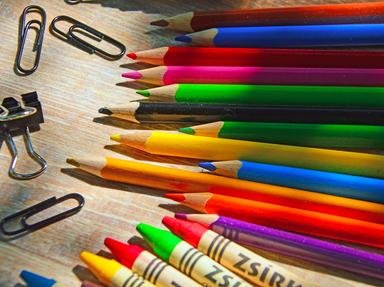Quiz Answer Key and Fun Facts
1. Pencils as such did not exist in Roman times, but the word "pencil" is derived from the Latin word for which other writing implement?
2. There was a time when pencil "lead" was, indeed, made from lead. The lead left a light mark and was mainly used for what function?
3. The pencil as we know it began in the 1500s near the town of Keswick in Cumbria, England. As the story goes, a tree was uprooted in a storm, revealing some black rocks, which the local shepherds found to be useful for marking sheep. What was this black rock?
4. Modern pencil leads are made by the Conté process. Ground-up graphite is mixed with which other substance, which acts as a binder?
5. Surprisingly, one of the major figures in the early history of American pencil making is also a well-known literary figure. What was his name?
6. Most pencils today are yellow, but in the early days of pencils, most were not. What caused the change?
7. If you have ever taken a standardized test, you may have heard of the "#2" pencil. What does this rating system refer to?
8. Consider the end of an unsharpened pencil. The lead is centered almost perfectly in the wood. What invention or innovation necessitated this level of precision in pencil manufacturing?
9. Erasers have always been included on the ends of pencils.
10. Consider a pencil's versatility. Which of these could you do with a pencil?
Source: Author
pu2-ke-qi-ri
This quiz was reviewed by FunTrivia editor
ozzz2002 before going online.
Any errors found in FunTrivia content are routinely corrected through our feedback system.

